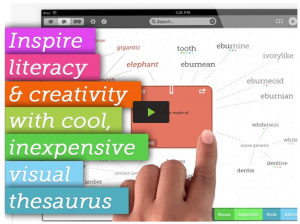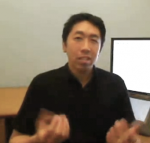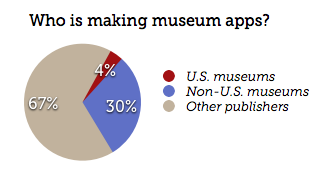Community Embraces New Word Game at Mid-Year Play Day This past Sunday, families at Takoma Park’s Seventh Annual Mid-Year Play Day had the opportunity to experience OtherWordly for the first time. Our educational language game drew curious children and parents to our table throughout the afternoon. Words in Space Several children gathered around our iPads […]
Read moreSearch Results for:
![]() Science journal subscriptions can cost libraries several thousand dollars a year, yet most institutions members only make use of a few articles from each of these journals. The huge subscription expenses limit how many journals each school or company can carry. Even single article pricing can be staggering, at $30-50 each. Sinisa Hrvatin, a doctoral candidate at Harvard, and his roommate Robert McGrath believe they have a better way. (more…)
Science journal subscriptions can cost libraries several thousand dollars a year, yet most institutions members only make use of a few articles from each of these journals. The huge subscription expenses limit how many journals each school or company can carry. Even single article pricing can be staggering, at $30-50 each. Sinisa Hrvatin, a doctoral candidate at Harvard, and his roommate Robert McGrath believe they have a better way. (more…)
 What happens to a city when the people that lived there die off or are absorbed by others? War, disease and natural disaster can all wipe out anyone who might carry on the story and heart of a city. (more…)
What happens to a city when the people that lived there die off or are absorbed by others? War, disease and natural disaster can all wipe out anyone who might carry on the story and heart of a city. (more…)
Blog bites
October 10th, 2012 by IDEA
Since spring 2010, this blog has covered all kinds of outreach topics, from museums to mobile devices to ebooks to blog networks. The most popular articles have been about strategic communications and QR Codes. These articles were written by Michael Douma, and many were long-form articles, based on multiple interviews or new analysis. Now, we’re going to try something
 Expand your outreach capacity with multiple media, multiple languages, new sites and apps, and other features by hiring freelancers. Here’s an overview of marketplaces we’ve successfully used at IDEA.
Expand your outreach capacity with multiple media, multiple languages, new sites and apps, and other features by hiring freelancers. Here’s an overview of marketplaces we’ve successfully used at IDEA.
Translations
In our global world, there’s no excuse for staying limited to English speakers, especially when there’s greater need for education in non-English places. Even if you have multilingual staff, most translations will be better and more cost effective if you outsource. Professional translators are efficient, and skilled at adapting idioms and phrases. They tend to be detail-oriented, soft spoken individuals. (more…)
 Open textbooks are receiving a potential boost by an ambitious new, organized peer review project organized by the University of Minnesota. The average college student suffers with $1,000 or more in annual textbook costs; however, if more professors adopt open textbooks, higher education will become more affordable. (more…)
Open textbooks are receiving a potential boost by an ambitious new, organized peer review project organized by the University of Minnesota. The average college student suffers with $1,000 or more in annual textbook costs; however, if more professors adopt open textbooks, higher education will become more affordable. (more…)
 Over 30,000 objects are now available for anyone to savor and study online, for free, in impressive high resolution, in Google’s ‘Art Project.” This is 30x expansion from the thousand objects in the first version launched in February 2011. See our prior article, The virtual vs. the real: Giga-resolution in Google Art Project. The project now has 151 partners in 40 countries; in the U.S., the initial four museums has grown to 29 institutions, including the White House and some university art galleries.
Over 30,000 objects are now available for anyone to savor and study online, for free, in impressive high resolution, in Google’s ‘Art Project.” This is 30x expansion from the thousand objects in the first version launched in February 2011. See our prior article, The virtual vs. the real: Giga-resolution in Google Art Project. The project now has 151 partners in 40 countries; in the U.S., the initial four museums has grown to 29 institutions, including the White House and some university art galleries.
See the site: Google Art Project (more…)
 IDEA is in the planning stages of a new project, to create a new thesaurus app for the iPad. As an experiment, we investigated whether “crowd funding” is a viable way to fund new educational apps. Our Kickstarter project was not funded, but we are still making the app!
IDEA is in the planning stages of a new project, to create a new thesaurus app for the iPad. As an experiment, we investigated whether “crowd funding” is a viable way to fund new educational apps. Our Kickstarter project was not funded, but we are still making the app!
Here’s some information about our Kickstarter experiment. (more…)
 “Being able to teach machine learning to tens of thousands of people is one of the most gratifying experiences I’ve ever had,” says Stanford University computer science professor Andrew Ng.
“Being able to teach machine learning to tens of thousands of people is one of the most gratifying experiences I’ve ever had,” says Stanford University computer science professor Andrew Ng.
Over 100,000 students signed up for his free, fall 2011 course on machine learning. The impacts were huge. Over 12% of the students completed the course, and received a statement of accomplishment. Ng says he “heard many stories from students about how they’re using it at work, about how it’s inspired them to go back to school, and so on.” In contrast, Ng’s normal, for-credit course at Stanford, one of the most popular on campus, would enroll 350 students.
It’s part of a new revolution in higher education, and it’s serious learning. They deliver complete courses where students are not only watching web-based lectures, but also actively participating, doing exercises, and deeply learning the material. Students are expected to devote ~12 hours a week to the course, to read and watch course materials, complete assignments, and take quizzes and an exam. ![]() Online students did not receive one-on-one interaction with professors, the full content of lectures, or a Stanford degree — those who completed the course received a statement of accomplishment. Course materials include prerecorded lectures (with in-video quizzes) and demos, multiple-choice quiz assignments, automatically-checked programming exercises with an interactive workbench, midterm and final exams, a discussion forum, optional additional exercises with solutions, and pointers to readings and resources.
Online students did not receive one-on-one interaction with professors, the full content of lectures, or a Stanford degree — those who completed the course received a statement of accomplishment. Course materials include prerecorded lectures (with in-video quizzes) and demos, multiple-choice quiz assignments, automatically-checked programming exercises with an interactive workbench, midterm and final exams, a discussion forum, optional additional exercises with solutions, and pointers to readings and resources.


 The vast majority of museums are totally ignoring mobile apps.
The vast majority of museums are totally ignoring mobile apps. Advertising is a classic, well-proven way to earn money for a publication, blog or site. “It’s the cost of not having direct, paid reader support,” says
Advertising is a classic, well-proven way to earn money for a publication, blog or site. “It’s the cost of not having direct, paid reader support,” says 